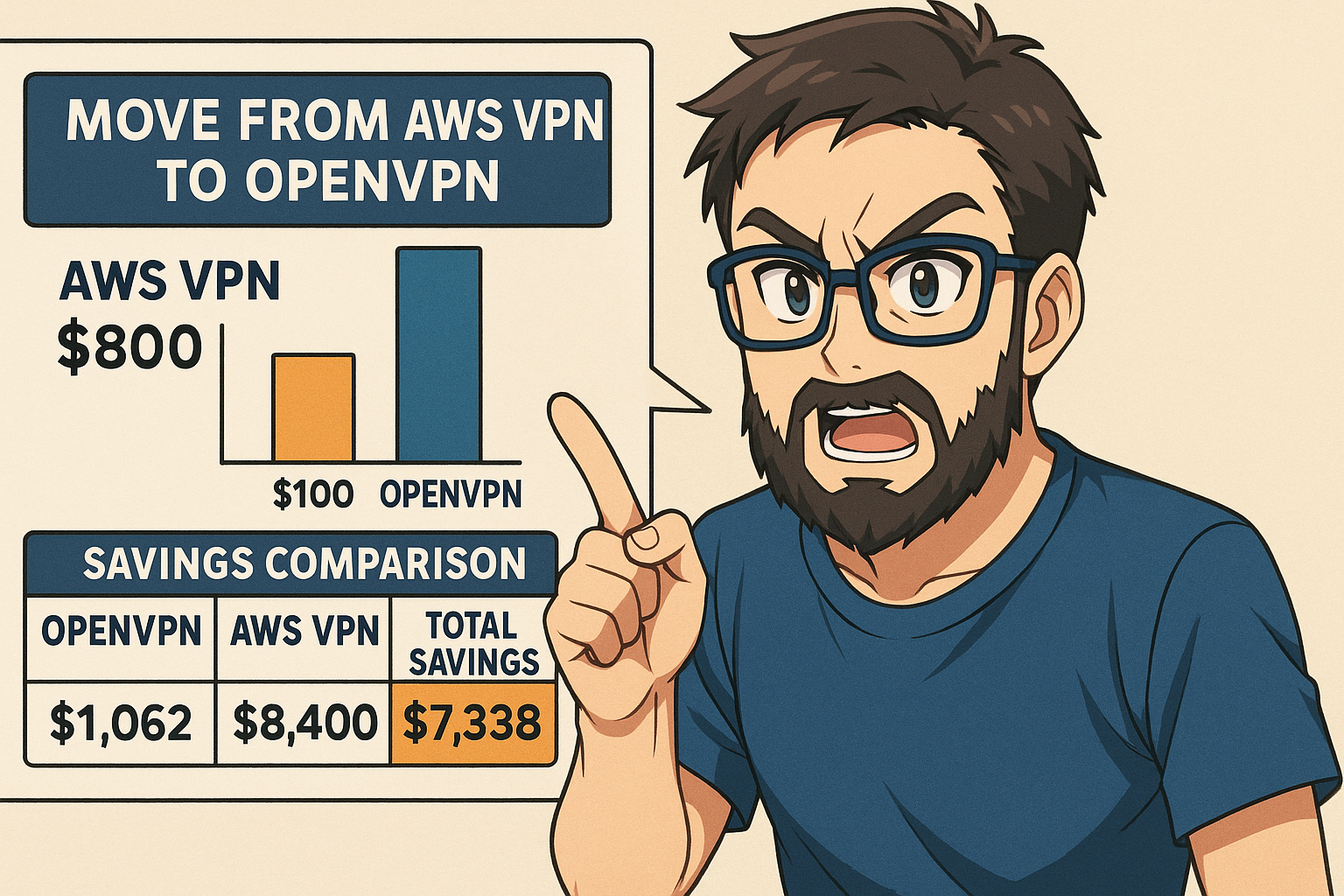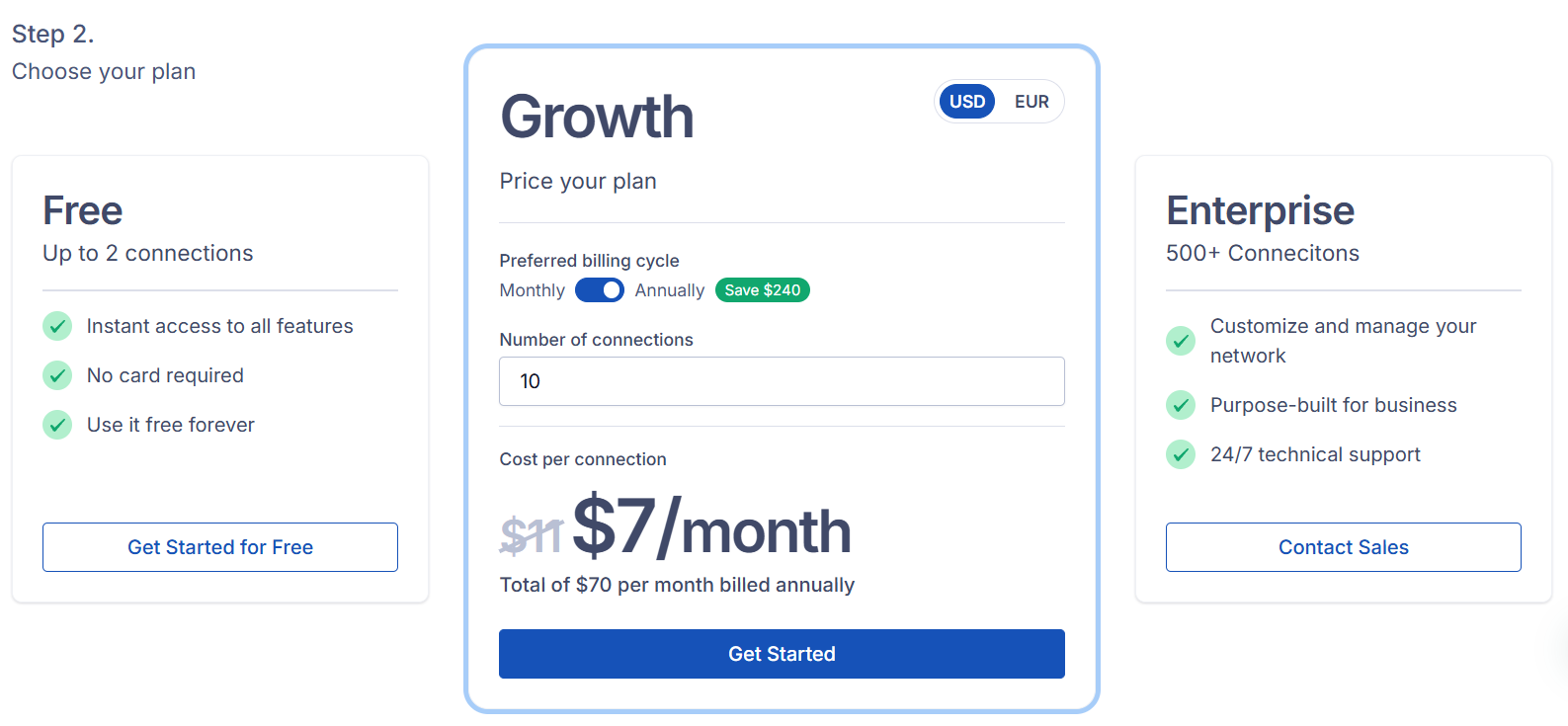Saving $7,338 Yearly by Implementing OpenVPN

In the past, we were using the VPN solution from AWS, and even though the per-hour cost seems cheap, the truth is the costs scale quickly when the whole team needs to be connected. We were a small team.
At some point, I was investigating a spike in billing, and I marked moving from the AWS VPN solution to OpenVPN as a possible improvement.
AWS VPN costs:

The service from AWS was working as expected; we didn’t have any complaints about it. But when we compared costs, using OpenVPN was way cheaper than using the AWS VPN service. To give an idea of how OpenVPN works in terms of licensing, they provide 2 connections for free, and as we were paying yearly, each license was $7/month.

Configuring OpenVPN is fairly easy, as you only need to pull the AMI from the AWS Marketplace. The marketplace provides you several options, from 5 licenses to 500 or even BYOL, and you pay for the licenses you really use. In our case, we paid at first for 7 and then we increased to 10.
Besides the costs associated with licensing, we had to pay for the EC2 instance running OpenVPN. This can run on a small instance; the only advice here is to use an instance type with high bandwidth. E.g., t4g.small provides up to 5 Gigabits, and r5.large provides up to 10 Gigabits.
The following table contains the expenses comparison:
| EC2 Instance Yearly | OpenVPN Licenses Yearly | OpenVPN Total Yearly | AWS VPN Yearly | Total Savings |
|---|---|---|---|---|
| $222 | $840 | $1,062 | $8,400 | $7,338 |
A cool feature provided by OpenVPN is SAML authentication, which is more flexible and easier to manage. Even Active Directory can be configured if you manage users that way.
To sum up, the AWS VPN service was performing perfectly for us, but as we were accessing just a few specific resources, it was convenient for us to make the migration. Also, it is something that can be set up in 1 or 2 days.
Get quality content updates subscribing to the newsletter, Zero Spam!